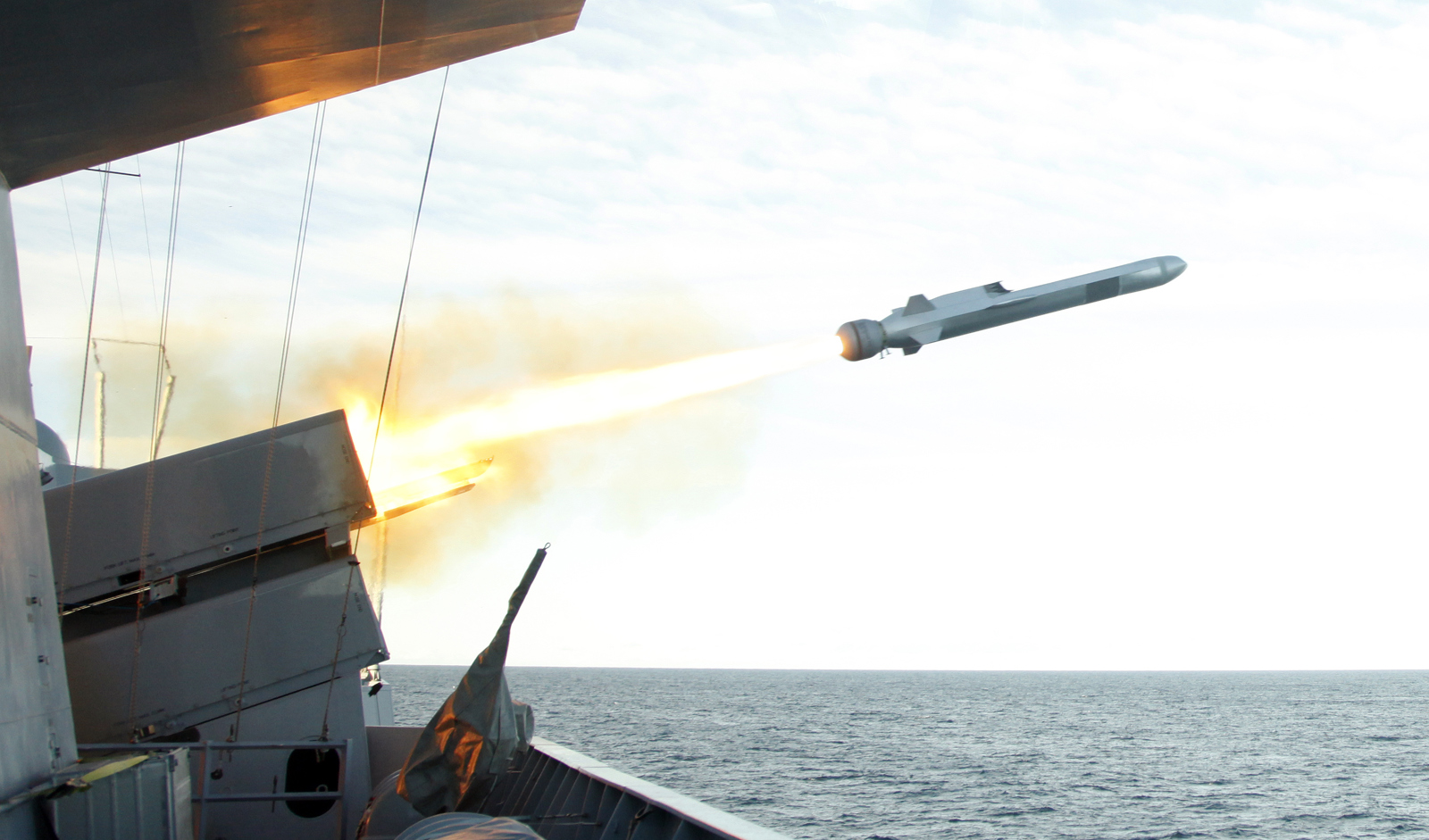
This is the moment which has been long awaited for 16 years. The first live launch in history from a frigate provided a clear demonstration that Norway now has a substantially enhanced defence capability.
-
Text:OVE RONNY HARALDSEN
-
Ove Ronny HaraldsenGroup Communication Manager
Andsfjord 14th of October 2012. The countdown has started. From the control centre at the top of the Ramnan peak, you can barely spot the KNM Roald Amundsen frigate out on the grey-blue seas between Andøya and Senja islands. The frigate is in position and all set to carry out its first live launch of the Naval Strike Missile.
On the bridge, Øyvind Kolset keeps checking his watch nervously. We are now in the last stage of the countdown. The crew members have pulled on fireproof gloves and hoods. A smokediving team is on standby. The radio announces “Arming NSM port”. Silence falls upon the bridge. There are no more smiles, only serious faces. Two minutes to go.
“How do you feel now,” we ask Øyvind Kolset.
“It’s very tense. I’m pretty sure that everything is going to be fine. The conditions are perfect today for a successful launch, but you can’t help your pulse racing before a launch.”
Øyvind Kolset is perfectly justified in feeling a certain anxiety. There’s no doubt that this type of operation carries a risk. Imagine if the countdown reaches zero and nothing happens. That would be a nightmare. At the same time, he can enjoy the wonderful sense of relief when the missile soars out into the air, the nail-biting tension as it flies towards its target and the indescribable joy when the missile hits its target. Øyvind Kolset and the rest of the development team working on the NSM have experienced all these emotions.
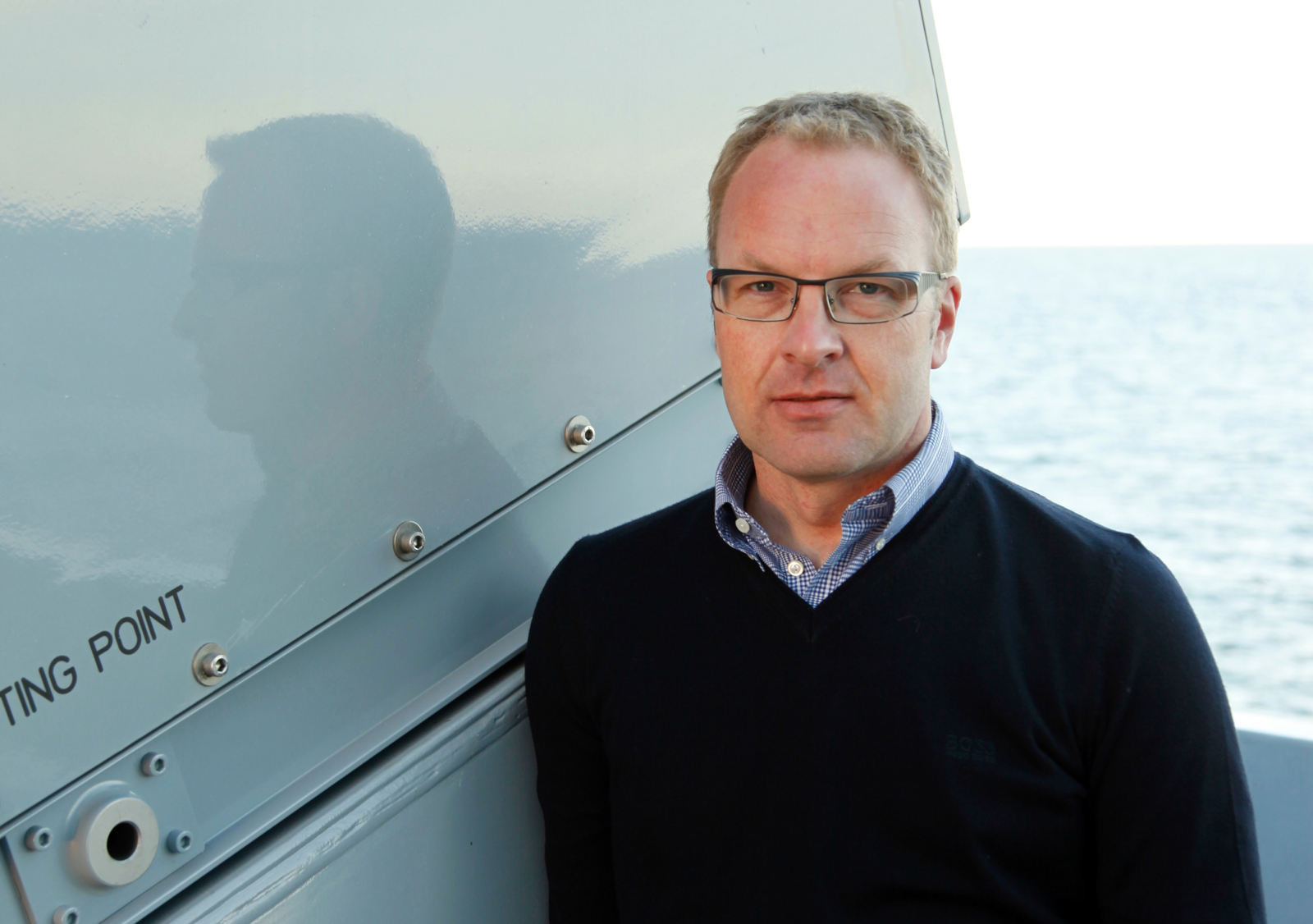
TURNING POINT
At the start of 2004, the entire NSM project was on the brink of closure. During development stage, several launches had failed either in whole or in part. Despite this, the decision was made to reorganise the entire project and to carry out a new test launch, the U6. In June 2004, the U6 was ready for launch from the Centre d’Essais de la Méditerranée launch site outside of Toulouse in France.

“You had to be there to understand the level of tension. You start to get paranoid, start doubting everything you know. And then the missile is launched, flies 150 kilometres and acts exactly as it should. We felt like we had saved the product. It was finally safe, as were all our jobs. We really needed that success. For me, U6 was a major turning point,” explains Mr. Kolset.
A FEW HAIR-RAISING SECONDS
Back onboard the KNM Roald Amundsen, the countdown is into the last minute. The launch supervisor counts down from the control centre on shore. We can hear the entire process via radio on the bridge. “Three – two – one – fire!” “Launch missile” commands a female voice from the operations room located at the heart of the frigate. “Launch missile” confirms the weapon operator. The next five seconds seem to go on for ever. The missile ramp is only a few metres behind the bridge. Never before have crew members been so close to a launch.
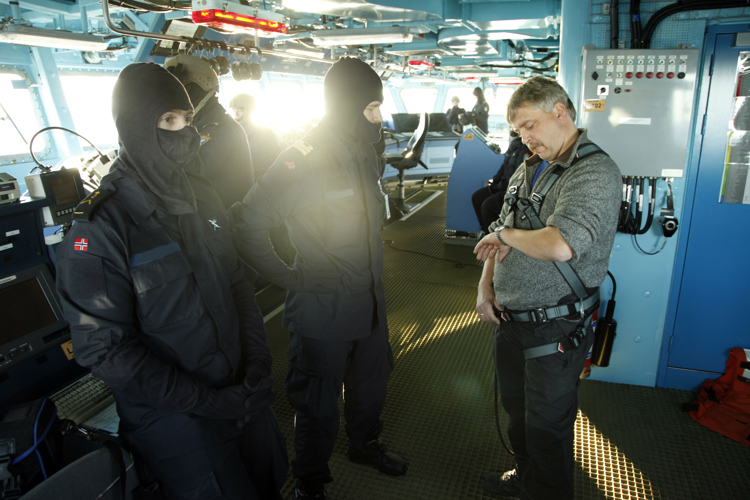
From the bridge, Project Manager Øyvind Kolset observes the hatch in front of the launcher as it opens. The starting engine ignites with a roar which reverberates to your very core. In front of our eyes is an oblong spurt of flame which leaves a yellow line of smoke behind it. It’s impossible to follow the missile body with our eyes. The smoke trail draws an arch over the water’s surface before diving into the sea leaving a column of water.
For a few embarrassing seconds, I (the author) was afraid that the missile had dived straight into the sea, before realising that the starting engine disconnects as the missile’s jet engine takes over propulsion. Beside us, Øyvind Kolset clenches his fists and utters a long “Yes” through clenched teeth. The radio announces “Missiles away”. Our bird is in flight.


We jog excitedly down the steep stairs to the operation room. Here we find the ship’s captain and his crew who are monitoring the path of the missile on its way towards target. The missile is following a huge arch and long lines drawn onto the chart of the ice-cold Andsfjord. The target vessel, the KNM Ægir, is well within range. However as part of the test, the missile is to fly over a longer, predefined course.
PERFECT HIT
An entire organisation of different elements is required to implement the live launch. Nearby the target vessel, a team of mine divers is waiting to pick up the dummy warhead once the ship has been hit. Another team is assembled onboard the Navy’s supply vessel, KNM Valkyrien, ready to save the target vessel from sinking.
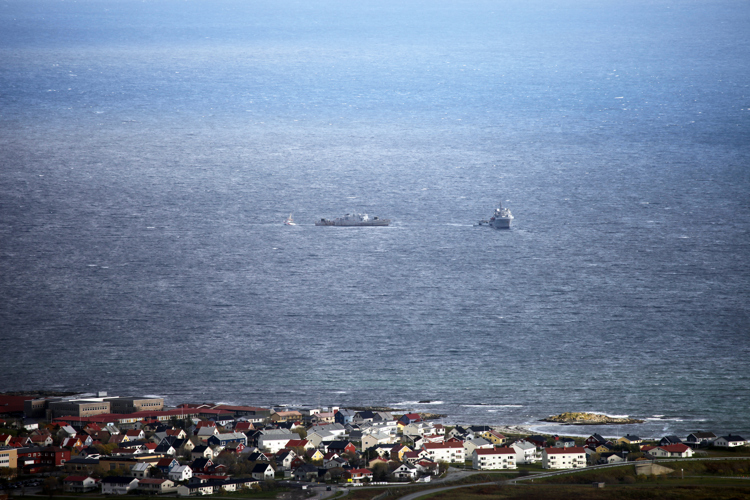
In the airspace above us is a P-3 Orion maritime surveillance aircraft. It has been fitted with an IR camera which locks on to the missile’s trajectory over the water’s surface. Out at sea are two of the Navy’s corvettes, feeling very satisfied that it was in fact the MTB Branch who were first to launch the NSM – four days earlier. The entire operations is monitored from the control centre for Andøya rocket launch site, located on the top of the hill just outside Andenes.
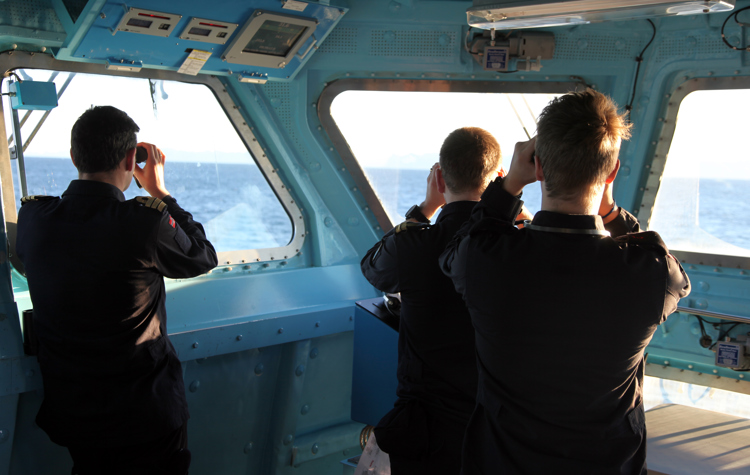
The ship’s captain is the first to receive the message that this missile has hit the target vessel. But where did it hit? He receives the actual coordinates. Øyvind Kolset pulls out a sketch of the target vessel, bends over and starts searching through the grid in the sparse, red light. Several crew members gather around him. Øyvind Kolset’s eyes light up as he finds the meeting point for the coordinates. The missile hit the bull’s eye, in the middle of the ship!
Out of nowhere, a silver tray appears carrying a bottle of champagne and glasses. The crew members break into applause and congratulate each other. Some people talk about the launch as one of the highlights of their career. They have been training for this moment for such a long time.

A wonderful feeling of success spreads throughout the crew. Eager to reach the target vessel and see where the missile hit with their own eyes, the captain orders the crew to start up the ship’s gas turbines. Minutes later, the frigate is storming ahead over the waves towards a group of vessels barely visible on the horizon.
WAR PREVENTION CAPACITY
This is an historical event for Norway, for the Royal Norwegian Navy and for KONGSBERG. Thanks to the Norwegian courage to invest in high technology developed within the nation’s borders, Norway now has a defence weapon tailor-made for Norwegian landscapes.
This product is not available anywhere else. With the long range of the missile, the high speed of the corvette and the strength of the frigate, the Royal Norwegian Navy now has a weapon system which allows them to defend most of the Norwegian coastline.

In terms of security policy, the Naval Strike Missile is described as a “threshold building” capacity. This means that a potential aggressor would have to take account of this capacity if planning an attack on Norway at sea. These are the words of launch supervisor and head of the MTB Branch, Commander Bjørn Kvisgaard, in an article in Forsvarets Forum, the Norwegian Armed Forces version of K-Magazine.
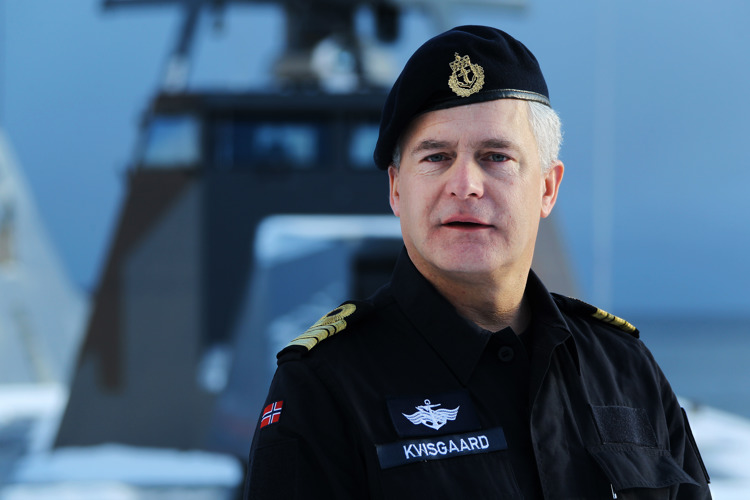
“These missiles afford the Navy a whole new dimension in terms of upholding sovereignty and exercising authority in Norwegian waters. (…) The missile system has been specially designed for exploiting terrain – over ground, among the archipelagos and at open sea. With low radar signature, high manoeuvrability and high accuracy, the Navy will be able to meet all present and future challenges. In many ways, this is a completely new capacity for the Navy and which provides Norway with a clearly improved defence capability.”
“I’M HAPPY, VERY HAPPY.”
As our frigate approaches the target, the rescue operation has already started. Without any explosive in the missile, the vessel should withstand the hit. However, the ship seems to be taking a huge gulp of water every time the waves hit the ship’s side. The KNM Roald Amundsen takes a victory loop to observe the target vessel from all sides. Nearby the KNM Ægir is a large RIB with four mine divers getting ready to pick up the missile remains from the seabed.
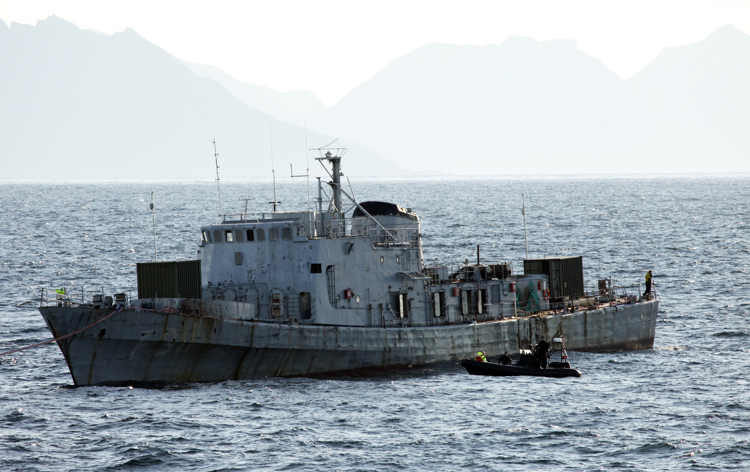
Øyvind Kolset has gone out onto deck with his binoculars. From here, he can enjoy the fresh sea air, and the sight of a large, black hole in the side of the KNM Ægir.
“How do you feel now?”

“I feel fantastic. There was absolutely no reason to doubt that it would be anything other than perfect. But it is still an intense experience to launch a missile. So now I’m happy, very happy. This was a total success,” he says with a smile.


